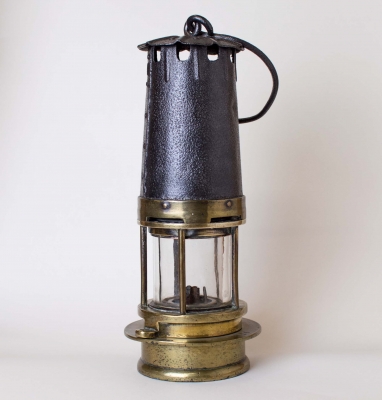
Mining was a dangerous business in the 19th Century as miners had to work in difficult conditions with limited tools. Add to it the risk posed by firedamp – the common name given to a mixture of flammable gases, mostly methane, that occurred naturally in mines – and the threat was very real.
The threat, in fact, burst out of proportion when a series of horrific mining disasters took place in 1815 killing several miners. The serious explosions in the coal mines in north-east England were caused by firedamp, prompting calls for increasing the safety of the miners’ working conditions.
Let us ask Davy
The Rector of Bishopwearmouth (a small village then that is now part of Sunderland) took the issue to English chemist Humphry Davy in order to find a safe means of lighting coal mines. Davy, who had already built his reputation as the discoverer of several chemical elements, spent an intense few months attacking the problem.
On October 30, Davy communicated several designs of lamp to friends by private letters. These designs included the one that went on to be called Davy lamp, a miners’ safety lamp. On November 9, Davy presented his ideas to the Royal Society, later published as the paper “On the Fire-damp of Coal Mines, and on Methods of Lighting the Mines so as to Prevent its Explosion”.
In this paper, Davy went into detail about his research on firedamp and its chemical composition. He also presented several designs of lamp that could be employed safely in mines, despite the presence of firedamp.
Simple design
The final design that he arrived at was a simple one that included a basic lamp with a metallic mesh wire gauze chimney enclosing the flame. While the holes allowed air to fuel the flame and the light produced to pass through, the heat was absorbed by the metal of the gauze.
Thus, it was safe to use as the flame couldn’t heat enough flammable gas to result in an explosion. Additionally, the flame itself changed colour – it would burn with a blue cap – if firedamp was present, providing a warning of sorts for the users.
Added advantage
Furthermore, the Davy lamp helped deal with the issue of asphyxiation (state or process of being deprived of oxygen), apart from handling flammable gases. The lamp could be used by miners to check for harmful concentrations of carbon dioxide. As the flame extinguished while the level of carbon dioxide was still not lethal, it could alert miners of the possible dangers ahead.
By January 1816, the Davy lamp was successfully tested in Hebburn colliery (coal mine). As its utility was evident, the lamp was fast-tracked into production and introduced to miners for their use.
Safety lamp controversy
At around the same time Davy was working on the problem, George Stephenson, an engineer at Killingworth Colliery, was also working towards a safety lamp. Stephenson, in fact, had successfully tested a safety lamp of his own design, which also operated on the principle of restricting the flow of air, on October 21.
Davy and Stephenson had arrived at very similar lamps using their own independent means. While Davy, the man of science, studied firedamp extensively before inventing the lamp, Stephenson, a self-educated mechanic, used intuition and common sense along with a lot of trial and error. The resulting lamps were nearly the same and what ensued was a bitter dispute over taking credit for the invention.
The safety lamp controversy lasted for considerable time, but it was Davy who eventually emerged on top, winning credit for inventing the first miners’ safety lamp. Stephenson enjoyed success as the inventor of the steam-powered railroad locomotive and is even hailed as the “Father of Railways”.
Regardless of whether the credit for inventing the miners’ safety lamp should be shared or not, it certainly did change the mining landscape completely. Its effect on the industry was immediate and impactful as it not only drastically reduced the number of fatalities per million ton of coal produced, but also increased the overall amount of coal produced as miners were mining deeper than ever before.
Picture Credit : Google




